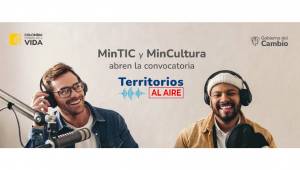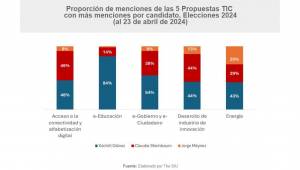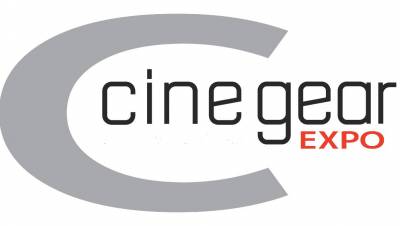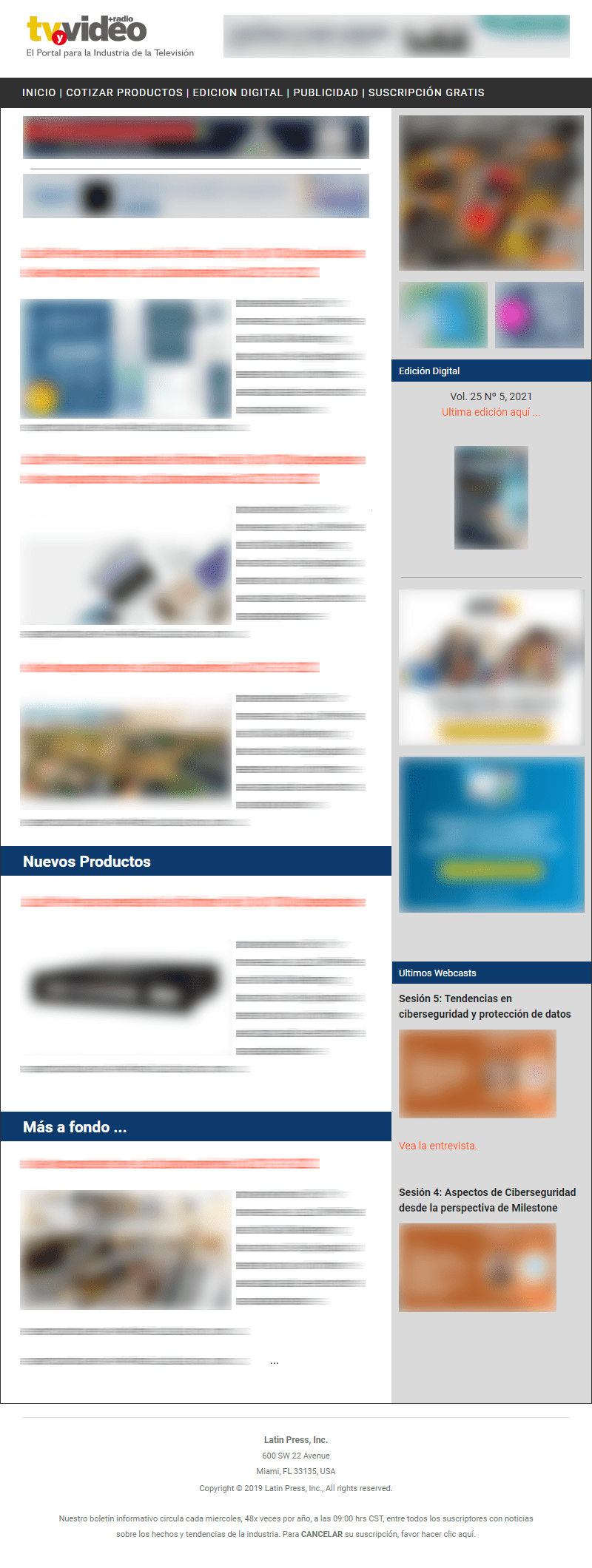Yezid Campos. Graduated in Anthropology at the Universidad de los Andes in Colombia. Master in Visual Anthropology and PhD candidate in Cultural Anthropology at Temple University in the United States. He studied Documentary Direction at the National Film and Television School in England.
He is currently the Director of the Communications Department of the Social Solidarity Network in Colombia.
TV&V: Why have you dedicated yourself to working with the Documentary genre?
Yezid Campos: My arrival in the documentary is the result of a long process, which begins with my work as a social researcher and finding myself with the need to tell what I was seeing, living and sharing with the communities with which I worked. It was not enough to publish articles that are usually only of interest to intellectuals or anthropologists, but there was a need for that work to be known to the rest of the people, I felt the need to find a medium and a language through which I could tell those stories that I shared with indigenous communities. they are in the Sierra Nevada de Santa Marta, for example. A medium and language that allows mutual recognition between members of different cultures and social environments. There is no doubt that one way to build intercultural bridges, respect and recognition of the needs and problems of each other is through documentary.
TV&V: What work have you done within the genre?
Y.C: I initially worked as a director and producer for TV, making documentaries about Latin America for European production companies. With other colleagues we made documentaries in Central America, in times of conflict, we were in Nicaragua and El Salvador, doing work that showed the problems that those countries were experiencing, I also made documentaries in Colombia, Peru and Cuba, the drug problem, the guerrillas, the indigenous people, etc. In addition, I have worked with other production companies and directors in North America.
TV&V: What line have you followed within your achievements?
And.C: Having come to the documentary as an option and preference, I have adopted this genre as a way of knowing, deepening and showing the drama, conflict and human behavior with an anthropological perspective and methodology, trying at all times to go beyond the simple appearance of facts and conflicts, seeking to know and explain them taking into account the voice, the point of view, the reasons and motivations of the same protagonists of the facts, of their cultural and social environment, of their history.
Usually the media is very superficial, showing only appearances. Under the false disguise of "neutrality" and "objectivity", some filmmakers and journalists hide ignorance and/or partiality in the way of seeing and approaching events; far from contributing to the knowledge and understanding of the facts, they misinform, strengthen false prejudices, perpetuate conflicts and false imaginaries. It is common that a lot of documentary, especially those that have to do with social, political or cultural issues, only say or focus on what the large media consortia or a certain audience wants to see and hear, and the truth is that in this way the true essence and social reason of the documentary is denatured and lost.
TV&V: What differentiates your anthropological outlook?
And.C: Anthropology allows one to have theoretical and methodological tools that facilitate exploring and knowing different situations and social and cultural behaviors, which are not revealed with the naked eye or with a superficial observation. They are research tools that enable a systematic, integral and coherent approach to social phenomena, to unravel meanings, ways of seeing the world, of acting, of dreaming, of loving, of educating, of warring and even of killing.
Anthropology as a social science, used in this case at the service of the documentary, allows one as a filmmaker, to immerse oneself in what happens in the daily life of the characters and situations that he wants to address to know their "truths", their movements, and everything that constitutes the fundamental raw material to process the history that one as a filmmaker wants to communicate through imá genes. In the documentaries I make, the feeling and point of view of the people I film is fundamental.
TV&V: What do you always look for in your achievements?
And.C: I seek to know, reveal and share experiences, points of view, expectations, daily life, facts and people anonymous or not, who are there, in many cases in front of us, but who we do not know, we ignore them and that I think are worth knowing and sharing and even learning from them. The mass media usually live by fabricating realities, heroes, gods, victims and even conflicts, which are presented to us as the "real", the "true", the "important", distracting us, limiting us and even hiding values and worlds, which as I said before, well worth knowing. In the process of thinking and making a documentary, one discovers unknown people and worlds, some of incalculable value others not, but through which one lives, feels, enjoys suffers, is passionate, knows fear, sadness, joy. I seek to live and feel that I am alive.
TV&V: What is Visual Anthropology?
Y.C: Briefly, I could say that it is a relatively young current of anthropology that points to the study of the way of looking, of representing and / of representing an individual or a culture, and here comes photography, cinema, video, makeup, painting, even the way of dressing, modeling, etc. When we talk about image in visual anthropology and in this case the still or moving photographic image in cinema or video, we do not refer to that image falsely conceived as a "mirror of reality", but to photography, cinema or video, as evidence, as illustration, as a means of communicating meanings. The camera in the hands of a researcher is, on the one hand, an instrument that captures images or photographs that are conceived as data and information about a specific culture and whose analysis can allow to know patterns of behavior of that culture and on the other the camera, as an object of study as the analysis that can be made of the form and use that is made of it by a given culture. In this last sense, photographs and images captured through cinema or video, are conceived as objects of study as the creation and manifestation of an individual, of a specific culture, which is why they can and should be studied taking into account the social and cultural context within which they are produced. Therefore, in the academic field we speak not only of visual anthropology but of anthropology of visual communication.
TV&V: You have had the experience of working with European production companies that handle large budgets. What does it mean to work with a good budget for these types of projects?
And.C: Working with a good budget has great advantages in making a documentary. It allows a greater stage of research, approach and knowledge of the events and people who want to film; logistically, a good budget allows the team to travel sometimes expensive, to do an interview, consult sources, etc. If needed, expensive but important copies of files for a story can be purchased. With a good budget you can count on a technical and human production team of the highest quality. All of the above will undoubtedly influence the quality of the form and content of the documentary.
But, beware, I am not stating that a good budget is a total guarantee for the final realization of a good documentary, or that not having a considerable budget is in itself a guarantee for the realization of a bad documentary. There are many filmmakers who have made important contributions in this genre, with limited and modest equipment and budgets. In the case of our countries, the filmmakers are having to work with a lot of imagination and creativity, we have no alternative.
TV&V: What has it meant to work for European companies?
And.C: In Europe there are many people interested in knowing what happens in Latin America, Africa, Asia, etc., there is a particular interest in knowing what happens in other cultures, there the documentary on television is a genre that is familiar to large audiences; something totally different from what happens in Latin America where programmers and the States themselves, with their misconception of fun and entertainment, have denied people the opportunity to watch documentaries, and to promote and cultivate a culture about it. Although there are exceptions, we can affirm that in general terms, there is a great respect for the documentary, not only in the circles of intellectuals and specialists, of the cinematheques, but also in the channels and media of commercial television, some programmers have "triple A" spaces assigned for the presentation of documentaries. For the production of documentaries, large companies have specialized departments as well as for the production of telenovelas, plot pieces, newscasts, etc. They invest money in the documentary, and obviously they make money. There are international distribution channels and networks. The documentary recognizes its social and communicative value, as well as entertainment, which is well worth promoting commercially. The filmmaker is respected for his point of view but equally demands veracity and depth in his arguments and assessments. As it is necessary to compete with multiple channels, with programs and genres of great attraction for diverse audiences, there is always the challenge of looking for innovative, aesthetic and dramatic forms for the documentary, which without detriment to the content, reach it and capture the attention of the viewers.
TV&V: What differentiates your work in documentary today, when you no longer work in film but in video and with reduced budgets?
Y.C: Well, nothing like cinema, its definition, the contrasts and its magic, so far are insurmountable. However, new and sophisticated technologies for television, digital cameras and editing systems, small formats, also have their advantages in the production of documentary. Small digital cameras, with professional quality in the image and sound, with their small cassettes of one or more hours of recording, somehow allow us to have a reduced human production team, one, two or three people at most, with great mobility and displacement capacity. The same stage of research and pre-production is favored because these small cameras allow us to collect audiovisual information of great value for planning and obtaining financing for the production stage itself. Small teams predispose less, so they allow us a faster approach to the people we want to work with; they are less destabilizing of people's daily lives, and are always at hand and ready to be used. The low budgets we have, usually lead us to consider local projects and easily approachable from the logistical point of view. This does not mean, in any way, that for this reason mediocrity and low quality in production can be justified, on the contrary the same care and care is required that any production requires, whether in film or video, with or without a high budget.
TV&V: What are you currently doing?
And.C: I work in the production of a television series that we have baptized "Weaving the Net". It is a series whose themes and protagonists show us the anonymous Colombia, that of the common people, the settler, the peasant, the displaced, the woman, the elderly, who in the midst of war and conflict struggle to get ahead, invest, create small businesses, have fun, dream, they have expectation and do not lose hope.
























Leave your comment